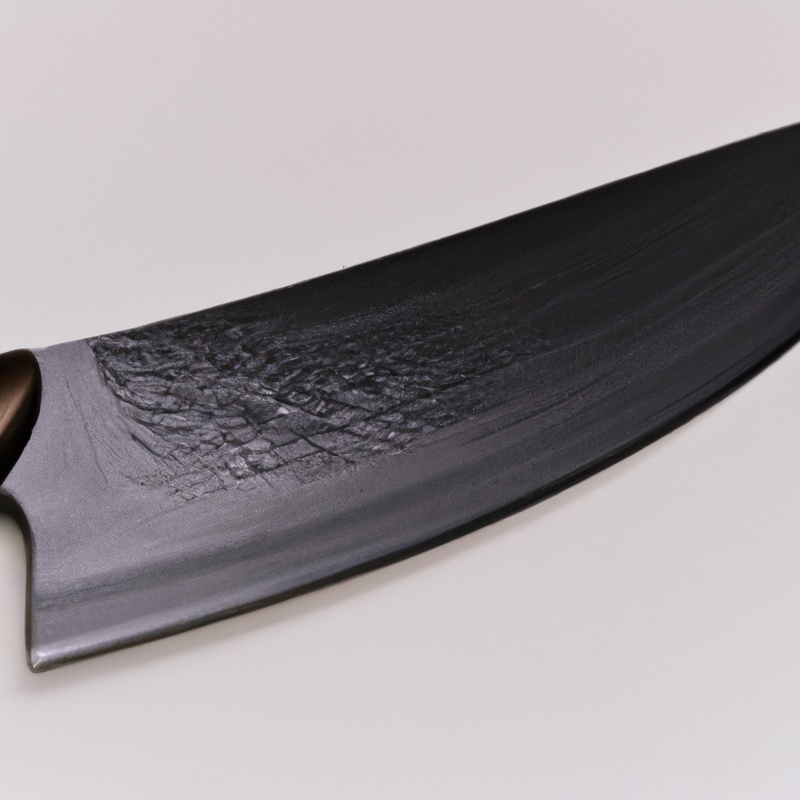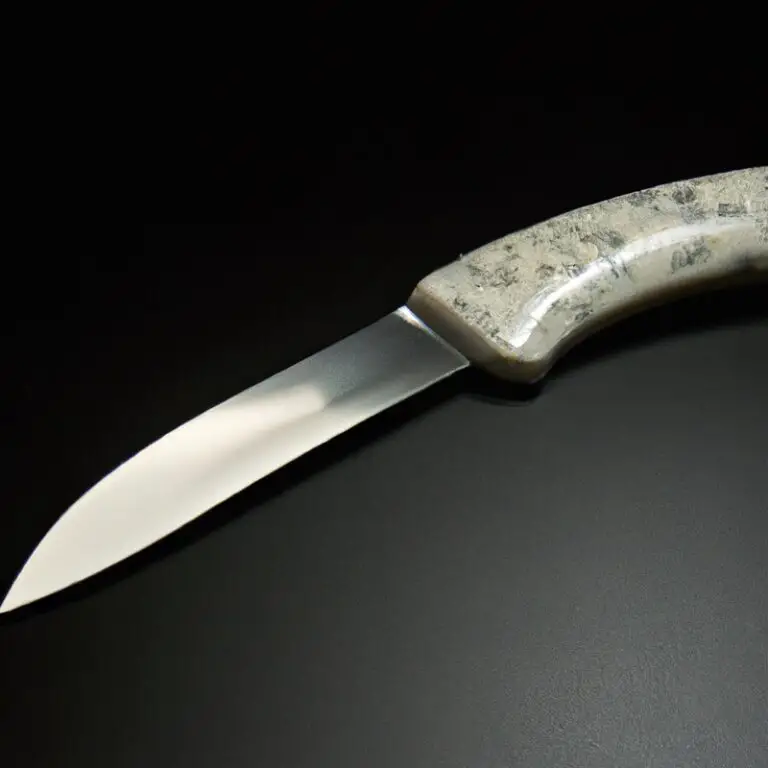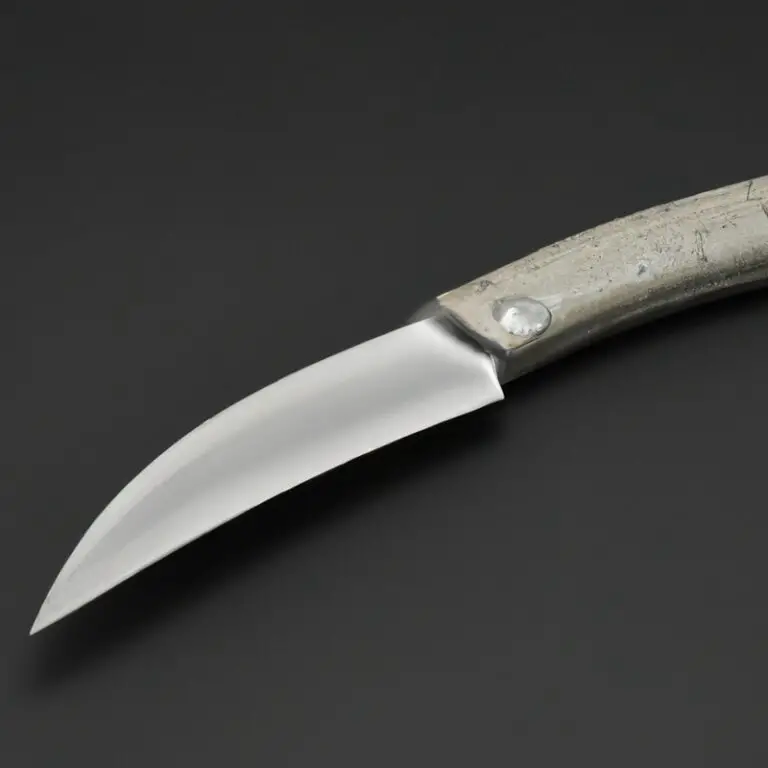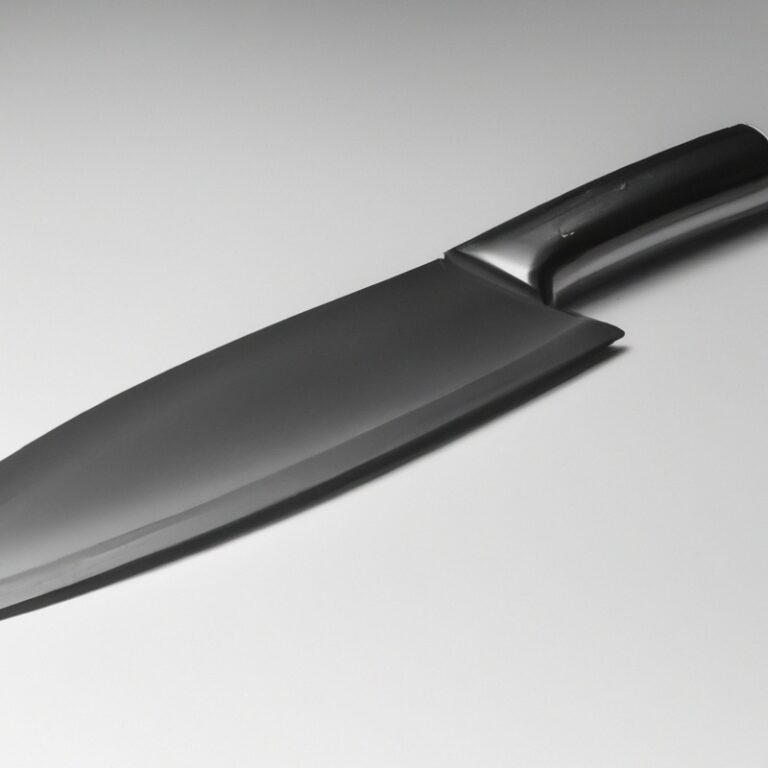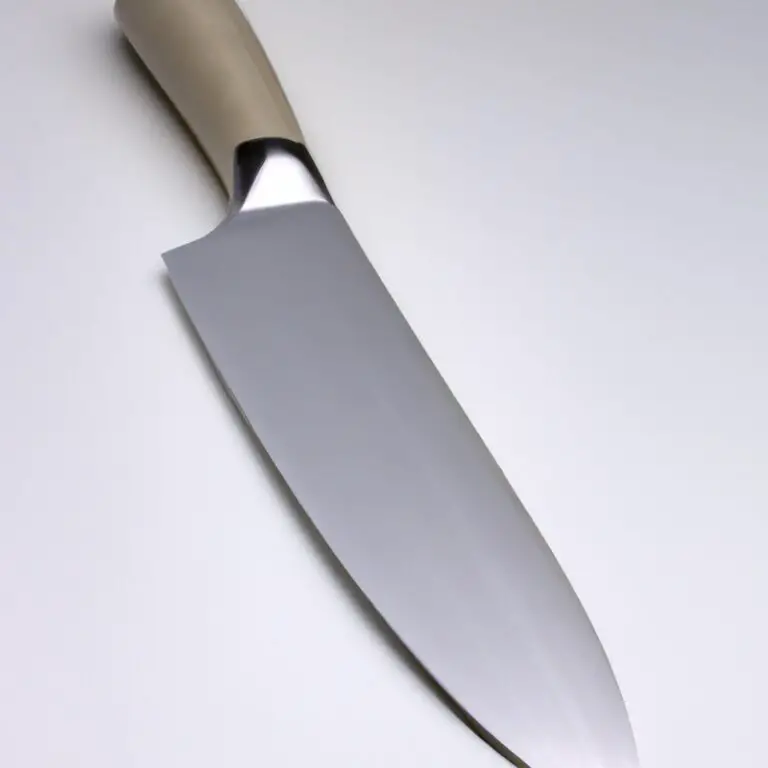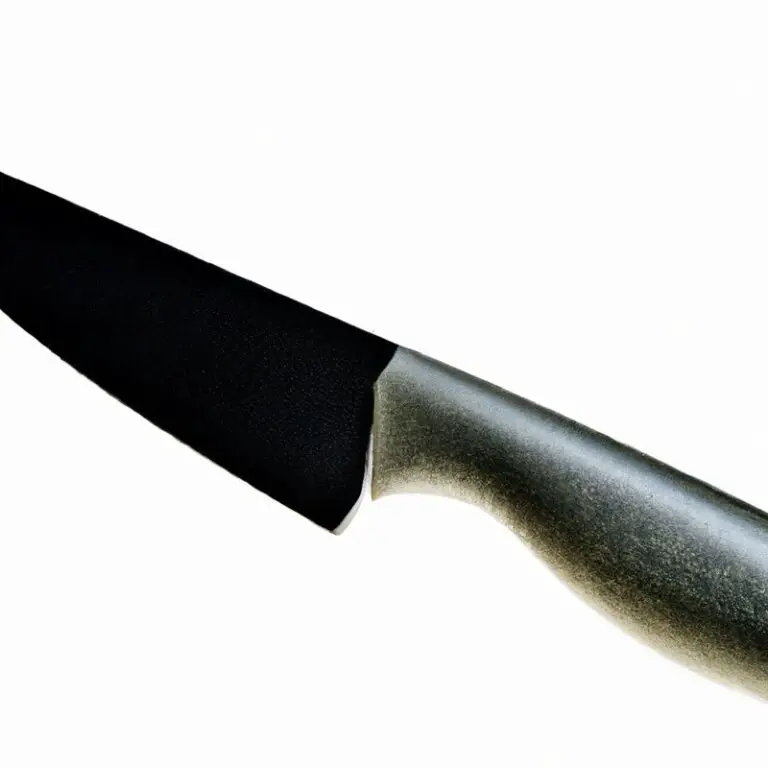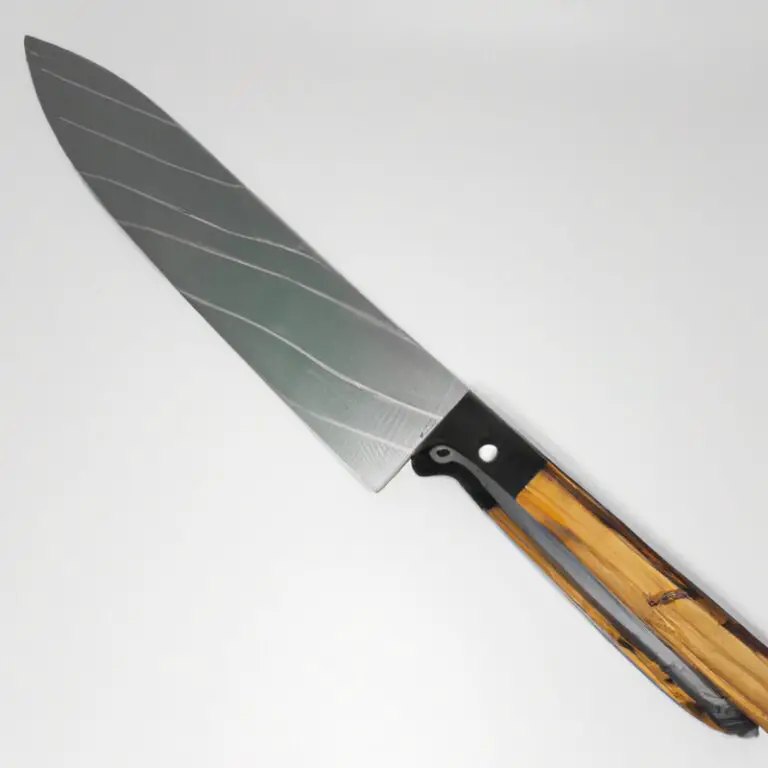What Are The Advantages Of Using a Plastic Cutting Board With Gyuto Knives? Slice Smarter
Key Takeaways:
- Using a plastic cutting board with Gyuto knives can increase their longevity and prevent dulling.
- Plastic cutting boards are easier to clean and sanitize, reducing the risk of contamination.
- Plastic boards are more affordable and readily available compared to alternative materials.
- The flexible nature of plastic boards can help preserve the sharpness of Gyuto knives by absorbing some of the impact from slicing and chopping.
If you’re a home cook or professional chef, you know the importance of having the right tools in the kitchen. And when it comes to knives, the Gyuto is a popular choice for its versatility and precision cutting ability.
But, do you know what type of cutting board is best suited for your Gyuto knife?
In this article, I’ll explain why plastic cutting boards are the ideal choice for Gyuto knives, and the benefits they provide for safe food preparation and maintenance. Plus, I’ll share tips on choosing the right plastic cutting board and how to properly care for your knives and cutting boards for long-lasting use.
| Advantages of Using a Plastic Cutting Board with Gyuto Knives |
|---|
| 1. Hygienic: Plastic cutting boards are non-porous and easier to clean, making them less likely to harbor harmful bacteria compared to wooden cutting boards. |
| 2. Knife-Friendly: Gyuto knives have a sharp edge that can be easily dulled by hard surfaces, such as glass or ceramic cutting boards. Plastic cutting boards are softer and gentler on knife blades, which helps maintain the knife’s sharpness for longer periods. |
| 3. Affordable: Compared to other types of cutting boards, plastic cutting boards are generally more affordable and widely available. |
| 4. Lightweight: Plastic cutting boards are lightweight and easy to transport, making them ideal for outdoor use or food preparation on-the-go. |
| 5. Color Coded: Plastic cutting boards are available in different colors, which can help prevent cross-contamination of food while cooking. For example, red cutting boards are typically used for raw meat, green for vegetables, and blue for fish. |
Why Gyuto Knives are Popular Among Chefs
Gyuto knives are popular among chefs for several reasons. One of the main reasons is their versatile usage.
They are suitable for various cutting techniques, such as slicing, dicing, and chopping.
The blade’s sharpness and thinness make it easier to cut through meat, fish, and vegetables. Another reason is their ergonomic design that makes them comfortable to use for extended periods.
The curved blade enables a smooth rocking motion while cutting, reducing wrist fatigue.
Additionally, Gyuto knives are made from high-quality materials like steel that make them durable and long-lasting. Their sharpness and durability make them a go-to tool for professional chefs.
Gyuto knives come in different sizes, making them suitable for different cutting tasks.
Overall, the versatility, ergonomic design, and durability of the Gyuto knife make it a must-have tool for chefs worldwide.
Understanding the Different Types of Cutting Boards
Cutting boards come in a variety of materials, including wood, plastic, bamboo, and glass. Each material has its own advantages and disadvantages.
Wooden boards are porous and can absorb bacteria, while plastic boards are non-porous and easy to clean.
Glass boards are hard on knives and can dull them quickly. Bamboo boards are eco-friendly but have a high risk of developing splinters.
When choosing a cutting board, it is essential to consider the type of knife used to ensure longevity and maintenance.
Gyuto knives require a cutting board that is gentle on the blade and does not dull it quickly. Plastic cutting boards are the ideal choice for Gyuto knives.
Not only are they knife-friendly, but they are also easy to clean, affordable, and available in a variety of sizes and colors.
Overall, understanding the different types of cutting boards and their impact on knives is crucial to providing efficient and safe food preparation. Choose a cutting board based on the type of knife and cooking needs, but for Gyuto knives, plastic is the way to go.
Plastic Cutting Boards vs. Wooden Cutting Boards
Plastic cutting boards are generally more hygienic than wooden cutting boards, as they are less prone to harboring bacteria. They are also more durable and easier to maintain than wooden ones.
However, wooden boards are better suited for certain tasks such as cutting bread or meat, as they are less damaging to the knife’s edge.
Overall, the choice between plastic and wooden cutting boards depends on personal preference and the specific task at hand.
Why Plastic Cutting Boards are Ideal for Gyuto Knives
Plastic cutting boards are ideal for Gyuto knives mainly because they are softer than wooden counterparts. Gyuto knives are crafted with a thin and sharp blade, which may lose its edge when used on a hard surface like wooden boards.
On the other hand, the slightly softer plastic cutting boards are more forgiving and less likely to dull the blade’s edge.
Moreover, plastic cutting boards are non-porous and do not absorb moisture, which can lead to the growth of bacteria in wooden cutting boards. Therefore, plastic cutting boards are both hygienic and practical for use with Gyuto knives.
Benefits of Using Plastic Cutting Boards with Gyuto Knives
Benefits of Using Plastic Cutting Boards with Gyuto Knives: Using a plastic cutting board with Gyuto knives has several benefits for both the knife and the user. Plastic cutting boards are made of durable, non-porous material, making them easier to clean and sanitize than wooden cutting boards.
This reduces the risk of cross-contamination and foodborne illness.
Gyuto knives have sharp blades that can easily scratch and damage wooden cutting boards, leading to grooves and spaces where bacteria can accumulate. Plastic cutting boards, on the other hand, have a softer surface that is gentler on the knife’s blade and does not harbor bacteria as quickly.
Additionally, plastic cutting boards are usually more affordable and lightweight than wooden cutting boards, making them ideal for both home cooks and professional chefs.
They are also dishwasher safe, making cleaning up after food preparation quick and effortless. In summary, using plastic cutting boards with Gyuto knives has several benefits, including easier sanitation, reduced risk of cross-contamination, protection of the knife’s blade, and affordability.
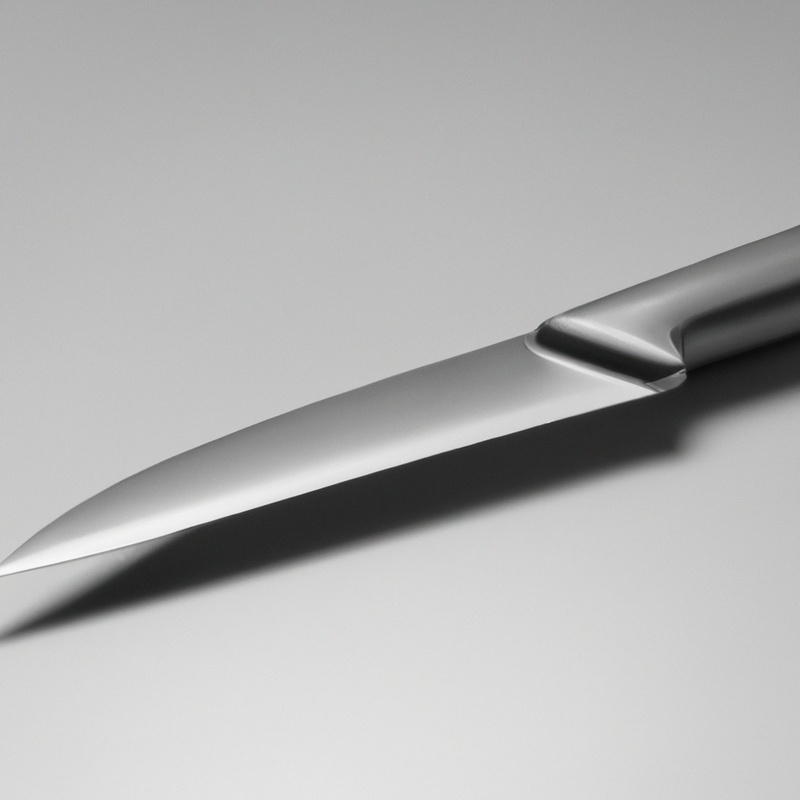
How to Choose the Right Plastic Cutting Board for Gyuto Knives
When it comes to choosing the right plastic cutting board for Gyuto knives, there are a few things to consider:
- Material: Look for high-density polyethylene (HDPE or polypropylene (PP) cutting boards, as these are durable and won’t dull your knife as quickly as softer plastic boards.
- Thickness: Choose a cutting board that is at least 1/2 inch thick to prevent warping or bending during use.
- Size: Make sure the cutting board is large enough to comfortably accommodate your Gyuto knife without overhanging the edge of the board.
- Brand: Choose a reputable brand that is known for producing high-quality cutting boards, and read reviews from other users to ensure you’re getting a top-rated product.
By considering these factors, you can choose a plastic cutting board that is perfectly suited for use with your Gyuto knife, ensuring precision cutting and optimal performance.
Maintenance Tips for Plastic Cutting Boards
To ensure the longevity and cleanliness of your plastic cutting board, here are some maintenance tips to follow:
- Wash the cutting board with hot, soapy water after each use and dry it thoroughly.
- Sanitize the board by wiping it down with a solution of one tablespoon of chlorine bleach per gallon of water.
- Avoid cutting hard items that can scratch the surface, leading to grooves where bacteria can grow.
- Don’t put plastic cutting boards in the dishwasher as the high heat can damage them.
- Replace your plastic cutting board every few years or when it shows signs of wear and tear.
Hygiene Practices for Safe Food Preparation
Maintaining proper hygiene practices during food preparation is essential to prevent the spread of harmful bacteria and illness. Here are some hygiene practices to follow when using plastic cutting boards with Gyuto knives:
- Always wash your hands thoroughly before handling food.
- Clean your plastic cutting board with hot, soapy water after each use.
- Use separate cutting boards for raw meats, fruits and vegetables to prevent cross-contamination.
- Sanitize plastic cutting boards by using a mixture of water and bleach (1 tablespoon of bleach per gallon of water.
- Replace your plastic cutting board if it becomes heavily scratched or damaged.
By following these hygiene practices, you can ensure that your food is safe to eat and protect yourself and others from foodborne illnesses.
How to Properly Store Gyuto Knives and Cutting Boards
Proper storage of Gyuto knives and cutting boards is essential to maintain their quality and prevent hazards. Here are some tips to ensure that they last long and perform optimally:
- Store Gyuto knives in a knife block or sheath to protect the blade from damage and avoid accidental cuts while handling.
- Avoid storing knives in damp or humid places and keep them away from direct sunlight to prevent corrosion.
- Clean and completely dry cutting boards before storage to prevent bacterial growth and odors.
- Store cutting boards in a cool and dry place, away from direct sunlight and heat sources.
- Never stack different types of cutting boards on top of each other as it can lead to cross-contamination.
- Separate cutting boards used for meat, fish, and vegetables to avoid the transfer of harmful bacteria.
- Clean storage areas regularly to maintain cleanliness and hygiene.
By following these simple storage tips, you can ensure the longevity and optimal performance of your Gyuto knives and cutting boards.
Longevity of Gyuto Knives and Plastic Cutting Boards
The longevity of Gyuto knives and plastic cutting boards is influenced by many factors, including usage, maintenance, and quality. Generally, Gyuto knives can last for many years if properly taken care of, while plastic cutting boards have a shorter lifespan and may need regular replacement.
To extend the lifespan of both these tools, it is crucial to follow manufacturer’s instructions for cleaning, sharpening, and storing.
Additionally, choosing high-quality materials and investing in reputable brands can also increase their longevity and ensure safe food preparation. Overall, taking the necessary steps to care for your Gyuto knife and plastic cutting board can lead to a longer lifespan, reduced cost, and improved safety in the kitchen.
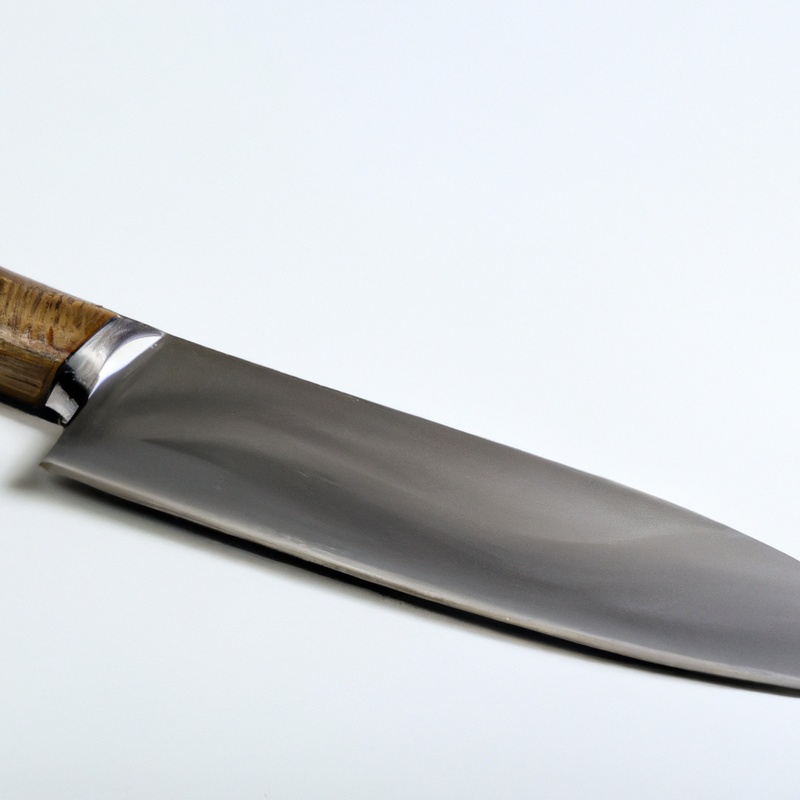
Final Verdict
Choosing the right cutting board for your Gyuto knife is crucial for both your cooking experience and the longevity of your equipment. While wooden boards may be aesthetically pleasing, they are not the most hygienic option for food preparation.
Plastic cutting boards are durable, easy to clean, and gentle on knives.
When selecting a plastic cutting board, aim for one that is non-porous and made of high-density polyethylene. Proper maintenance and hygiene practices will ensure that your plastic cutting board lasts for many meals to come.
By following these guidelines, both your Gyuto knife and plastic cutting board will remain in top shape, providing excellent functionality and reliability in your kitchen.
Trust in these helpful tips to keep your cooking experiences safe and enjoyable, time and time again.

